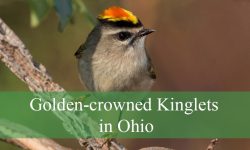Famous for their striking red plumage and sweet songs, cardinals are a beloved part of North America’s birdlife, including in New York. Their vivid plumage, distinctive crests, and melodic songs make them a favorite for both amateur birdwatchers and seasoned ornithologists. While many people picture the male Northern Cardinal’s brilliant red feathers, these birds have a depth of behavior and ecological significance that often goes unnoticed. Observing them closely can reveal fascinating details about their habits, social structure, and even the role they play in local ecosystems.
New York offers a diverse range of habitats for cardinals, from suburban backyards and city parks to dense woodlands and forest edges. Each setting provides opportunities to witness different behaviors, such as courtship displays, territorial disputes, and feeding patterns. Understanding the preferred environments of cardinals not only enhances birdwatching experiences but also contributes to their conservation by highlighting critical areas for protection.
Beyond the Northern Cardinal itself, several other birds are often mistaken for cardinals. Brightly colored or crested species can create confusion for casual observers, making identification a rewarding challenge. Learning the subtle distinctions between true cardinals and their look-alikes enriches the experience and allows enthusiasts to appreciate the full diversity of New York’s avian population.
The Northern Cardinal: A True Icon of New York
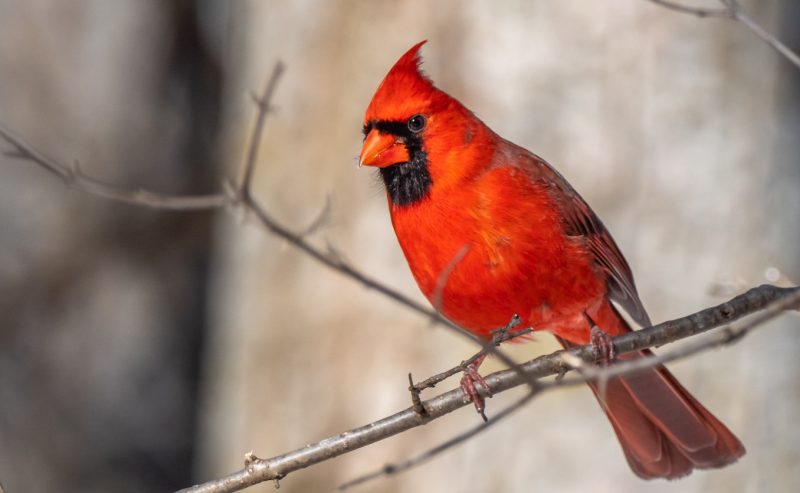
The Northern Cardinal (Cardinalis cardinalis) is the only true cardinal species native to New York. It is widely celebrated for its striking appearance and engaging behavior. Adult males are an unmistakable scarlet red, accented with a black mask around the eyes and throat that emphasizes their facial features. Females, in contrast, are primarily soft brown or tan with warm reddish tinges on the wings, tail, and crest. Both sexes have a prominent, upright crest atop their heads and a strong, cone-shaped orange-red beak designed for cracking seeds.
Northern Cardinals are medium-sized songbirds, typically measuring between 8.3 and 9.1 inches in length with a wingspan ranging from 9.8 to 12.2 inches. Adult males usually weigh around 1.5 to 1.7 ounces, slightly heavier than females. Despite their relatively small size, cardinals are bold and confident birds, often perching in visible spots to sing and assert territorial dominance. Their song is a rich, clear whistle, often described as a series of repeated “cheer-cheer-cheer” or “birdie-birdie-birdie” notes, and can be heard year-round.
Behaviorally, Northern Cardinals are mostly monogamous, forming pairs that often remain together for multiple breeding seasons. They are highly territorial, with males aggressively defending their nesting area from intruders. Cardinals feed primarily on seeds, fruits, and insects, and their strong beaks enable them to handle a variety of food items. Their feeding habits play a vital ecological role, contributing to seed dispersal for many native plant species in New York.
Habitat and Distribution Across New York
Northern Cardinals thrive in a wide range of environments, making them highly adaptable birds. In New York, they are commonly found in suburban gardens, parks, hedgerows, and forest edges. They favor areas with dense shrubs or thickets for nesting and protection but are also comfortable near human habitation, especially where feeders are provided. Cardinals are non-migratory in New York, which means they can be observed year-round, even in colder months when their vivid red plumage stands out against snow-covered landscapes.
Cardinals construct nests in low to mid-level shrubs or small trees, typically 3 to 10 feet above the ground. The female usually builds the nest from twigs, bark strips, grasses, and leaves, forming a cup-shaped structure that provides safety for the eggs and hatchlings. Nesting occurs primarily in late spring and early summer, with females laying between three and four eggs per clutch. Both parents participate in feeding the young, which fledge after approximately 10 to 12 days.
The availability of food sources greatly influences cardinal distribution. In urban and suburban settings, bird feeders stocked with sunflower seeds, safflower, or cracked corn can attract these vibrant songbirds. In more natural habitats, cardinals forage on the forest floor and in shrubs, searching for seeds, berries, and insects. Their presence in both human-altered and wild areas illustrates their ecological flexibility and resilience.
Fun Facts About Northern Cardinals
Northern Cardinals are not only visually stunning but also behaviorally fascinating. One of the most interesting traits is that male cardinals sometimes exhibit aggressive behavior toward their own reflection in windows or mirrors, mistaking it for a rival. This phenomenon, known as “window aggression,” demonstrates their territorial instincts and the importance of visible boundaries in their social interactions.
Another fun fact is that cardinals do not migrate. Unlike many songbirds that travel thousands of miles to find warmer climates, Northern Cardinals are permanent residents throughout New York. Their bright plumage provides an advantage in mating displays and communication, while their sedentary nature allows them to establish long-term territories. Additionally, cardinals are among the few bird species where both sexes sing. While males use song to defend territory and attract mates, females may sing to communicate with their partner or signal distress.
Cardinals are also highly adaptable in terms of diet. Although seeds make up the bulk of their meals, they frequently supplement with fruits, insects, and even small invertebrates. During winter, they rely on berries and seeds to sustain themselves, and backyard feeders can provide an important supplementary food source. This dietary flexibility contributes to their widespread presence in New York.
Birds Often Confused with Cardinals
While the Northern Cardinal is unmistakable once familiar, several other species can be mistaken for cardinals by novice birdwatchers. These include the Scarlet Tanager, the Summer Tanager, and certain species of grosbeaks and finches.
The Scarlet Tanager (Piranga olivacea) is seen in New York during the summer months. Males display bright red bodies with contrasting black wings and tails, making them superficially similar to male cardinals. However, scarlet tanagers are slightly smaller, have a slimmer profile, and their beaks are more pointed and delicate than the thick, cone-shaped beak of a cardinal. Additionally, their song is different, consisting of a distinctive “chip-burr” or husky warble rather than the cardinal’s clear whistle.
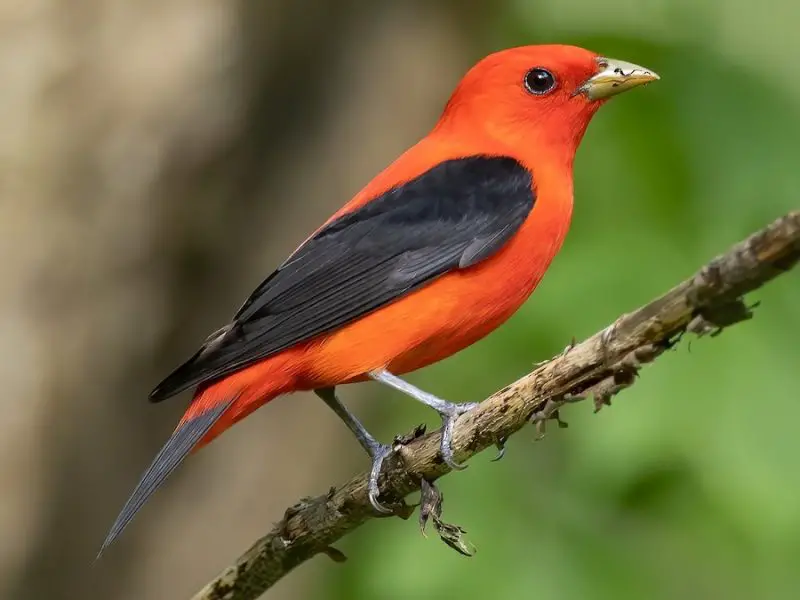
The Summer Tanager (Piranga rubra) is another migratory bird occasionally confused with cardinals. Found in southern New York primarily during migration, males are solid red while females are yellowish. Unlike cardinals, tanagers are more often seen foraging in higher tree canopies rather than near shrubs or feeders.
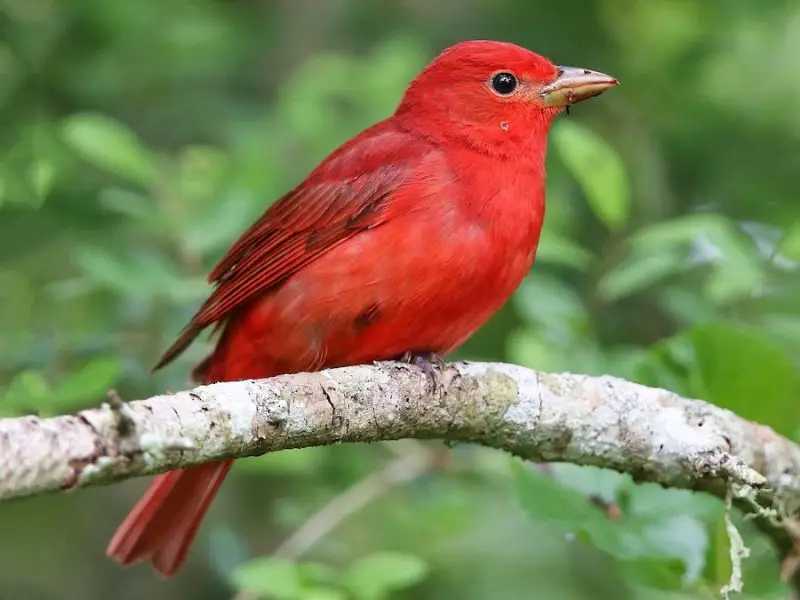
Other look-alikes include certain grosbeaks, like the Rose-breasted Grosbeak (Pheucticus ludovicianus), which has red, black, and white coloration. While striking, their wing patterns and body proportions differ from the Northern Cardinal. Awareness of these subtle differences is essential for accurate identification and enhances the birdwatching experience.
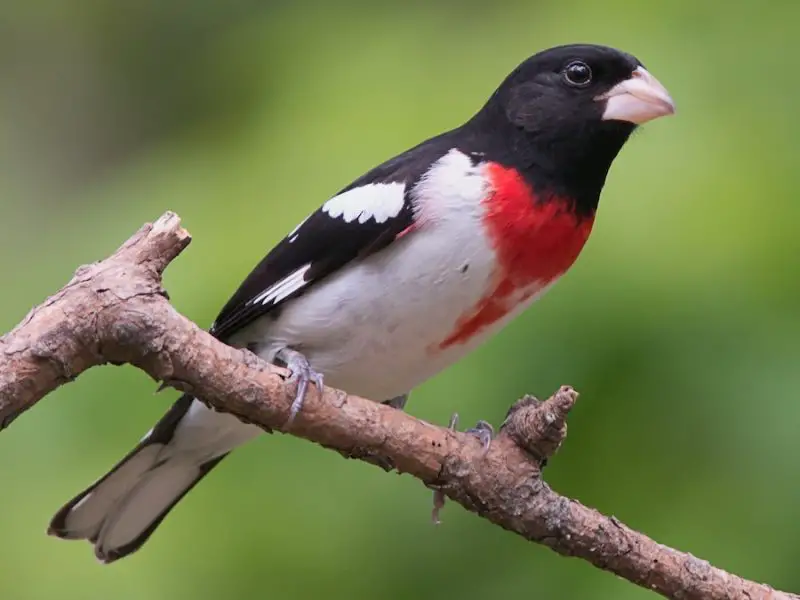
Best Times and Places to View Cardinals in New York
Cardinals can be observed throughout the year in New York, but certain times and locations make sightings more likely and enjoyable. Winter months provide high visibility, as their bright red plumage stands out against snow-laden landscapes. Early mornings and late afternoons are prime times for listening to their melodic songs and observing feeding behavior.
Suburban areas with dense shrubbery, backyard feeders, and ornamental trees are excellent spots for casual observers. Parks such as Central Park in New York City, the Adirondack region, and Long Island’s wooded areas provide natural habitats where cardinals are frequently seen. Birdwatchers are often rewarded by observing pairs interacting, feeding young, or engaging in territorial displays. Dense hedgerows, forest edges, and riverbanks are also favored locations for nesting and foraging.
Observers should be patient and quiet, as cardinals are cautious despite their bold appearance. Using binoculars and spotting scopes enhances the experience and allows for detailed observation of plumage, behavior, and interactions with other birds. Providing appropriate native plants, berry-producing shrubs, or seed feeders in residential areas can increase opportunities for prolonged viewing.
Conservation Status and Environmental Importance
The Northern Cardinal is currently classified as a species of least concern by conservation authorities, thanks to its widespread distribution and adaptability. Nevertheless, habitat loss and urbanization can affect local populations. Protecting wooded areas, maintaining shrubs and hedgerows, and providing food sources in urban settings contribute to the species’ continued success in New York.
Cardinals play an important role in their ecosystems. As seed dispersers, they facilitate the growth of various native plants. By preying on insects, they also contribute to the regulation of pest populations. Furthermore, cardinals serve as an indicator species; their presence and behavior can signal the health of local habitats. Supporting these birds indirectly supports biodiversity and ecosystem stability across New York landscapes.
Conclusion
The Northern Cardinal is an emblematic bird of New York, captivating observers with its brilliant plumage, melodic songs, and engaging behaviors. Understanding their characteristics, habitat preferences, and ecological roles provides both enjoyment and knowledge for bird enthusiasts. While several other species may superficially resemble cardinals, learning to distinguish them enhances appreciation for the state’s avian diversity. Whether in urban parks, suburban backyards, or forested regions, cardinals are a vibrant and enduring presence in New York, offering endless opportunities for observation, study, and enjoyment.
FAQs About Cardinals in New York
How can I identify a Northern Cardinal in New York?
Male cardinals are bright red with a black facial mask and orange-red beak, while females are brown with reddish highlights. Both sexes have a noticeable crest and stout, conical beak.
When is the best time to see cardinals in New York?
Cardinals can be seen year-round. Winter provides the highest visibility against snow, and early mornings are ideal for hearing their songs and observing feeding activity.
Do cardinals migrate in New York?
No, Northern Cardinals are non-migratory and remain in their territories throughout the year.
What other birds are often confused with cardinals?
Scarlet Tanagers, Summer Tanagers, and Rose-breasted Grosbeaks are sometimes mistaken for cardinals due to red coloration or crests. However, differences in beak shape, size, and behavior help distinguish them.
How can I attract cardinals to my backyard?
Providing dense shrubs, berry-producing plants, and seed feeders with sunflower seeds or safflower attracts cardinals. Water sources like birdbaths also increase visits.






